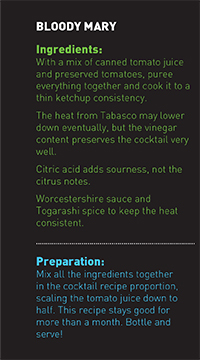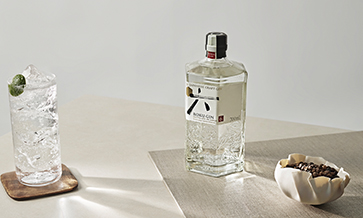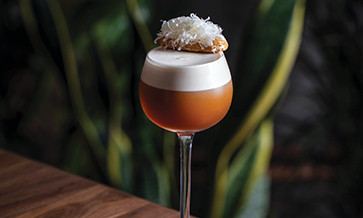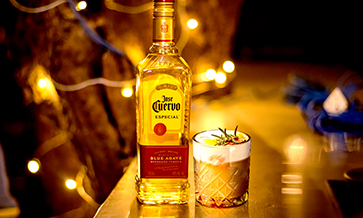‘Bottled’ and ‘batched’ cocktails seem very similar terms, but are quite different in a number of ways. Batched cocktails are cocktails which generally require more preparation in terms of the ingredients and hence are batched to avoid issues – in their consistency as well as to reduce the time taken to make the drink in front of the guest.
These styles of cocktails generally use delicate flavours, so that the aroma and the character can be well instilled into the cocktail.
Bottled cocktails generally use a smaller array of ingredients so they can be bottled and sold across the counter. They usually have a very high shelf life of up to a year, and some even don’t come with a shelf life, like the Negroni.
Bottled cocktails which usually go out for sale in retail would either be a classic or a mild twist on the classic, so it could be appreciated by a majority of the clientele. In the last 5 years, bottled cocktails have been a common thing in bars.
Bars generally add a drink or two on the menu, which are served in bottles or can be taken away by guests as souvenirs, etc. Bottled cocktails catch on from guest to guest, and it builds a kind of energy in the bar.
Says Jeffrey Morgenthaler, the bar manager at Portland’s (Oregon, US) Clyde Common” “It’s the I-want-what-she’s-having effect. It works, in large part, thanks to its novelty.”
Batched cocktails were always a part of cocktail culture. The farthest sighting of such cocktails can be found in Jerry Thomas’ compendium of ‘How to Mix Drinks’. These cocktails were specifically meant to be bottled like the Victoria Punch, Nectar Punch and the classic Gin Punch.
However, in the last 10 years, this has now become a trend and gives consumers a chance to take a piece of their favourite bar back home.
My favourites
Commonly you would see drinks which do not use any fresh ingredient or pulp in the drink, such as Negronis, Old Fashioneds, Manhattans, etc. But with the boon of centrifuges and rotary evaporators, bartenders have begun to experiment with fresher cocktails like Sours, Fizzes, etc.
The La Paloma de Oaxaca from Coa (Hong Kong) is created with the same high-quality spirits used at the bar, featuring Arquitecto Tequila and Alipus Mezcal. It is combined with a home-made grapefruit soda.
Each 330-ml can of the cocktail makes the equivalent of two servings. The drink comes with a sachet of worm salt on the side for you to complete Coa’s Paloma experience at home.
The Mandarino Negroni is the newest creation by Sandeep Kumar from The Wise King (Hong Kong) and is designed to be bottled. This bar has a great list of cocktails that has helped them pave their path during the lockdown.
The response has been so amazing that I am sure their bottled cocktails are not going away anytime soon.
The Mandarino Negroni is a mix of their newest collaboration N.I.P Gin, Mancino Vermouth Secco, Mandarinetto Isolabella Liquore Originale, Rinomato Americano Bianco, with all these liqueurs singing in perfect harmony!
Sago House (Singapore) is another example of a bartender origin bar. Started by Jay Gray and Abhishek Cherian George, they have a fantastic programme of bottled and canned cocktails. They also have low ABV sipping cans which are a great substitute for the regular soda purchases from a local 7-Eleven.
One of my favourites from their list is the Ay Caramba!, an elevation on the classic Paloma with Ancho Tequila, Forest Fruit tea, Pink Grapefruit and Cherry bitters.
Closer home
In India, selling bottled cocktails from a craft cocktail bar comes with a very big cost of licensing. Yet, some bars in India have been working on processing some of their signature ingredients to have a higher shelf life, so that consumers can carry it home.
Among the couple of stand-outs at Sidecar (Delhi) and Cocktail & Dreams Speakeasy (Gurugram) has been the Pandan Old Fashioned, with fresh Pandan leaves infused into filtered water, then turned into cordial with organic palm sugar, balanced with Speakeasy aromatic bitters.
The Bael shrub (wood apple) is a seasonal native ingredient to India and to Sidecar. We use farm-fresh Bael which is preserved with apple cider vinegar and seasonings to create this shrub.
It has been quite popular in our regular days; so now, when the bars are shut, this gives our guests an avenue of still experiencing a bit of Sidecar at home!
But how does one choose the right cocktail? Don’t choose something which will perish over time. Work on each ingredient to increase its shelf life. Use clarified like for citrus-forward drinks, reduce fruit nectars for juices, shrubs for fresh fruit pulps, etc.
Combine all the ingredients in the right proportion. Scale up original recipes for a balance and consistent flavor; and store in air-tight bottles in refrigeration all the time.
Pros and Cons
It is a great opportunity for bars to market their product and generate revenue at the same time. Batching is all about consistency. So it is a great step for bars to smarten their game.
However, one tends to lose out on the experience of a bar and bartender. The consumer’s reaction truly depends on how he makes or consumes his/her drink. Even though the directions are mentioned, people may tend to drink it the wrong way and make wrong opinions about some great product!
As a trend globally, I think this is here to stay. Bottled cocktails have been a thing for 4-5 years; but now, due to the social restrictions imposed by the Covid-19 pandemic, they have come into the limelight.
In India, I think, it will eventually fade out because people still want to go out and eat along with their drinks. Right now, though, things look better with people learning more about cocktails and drinking cocktails at home.















